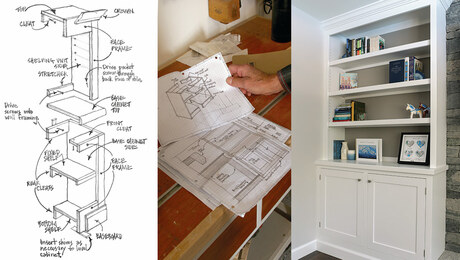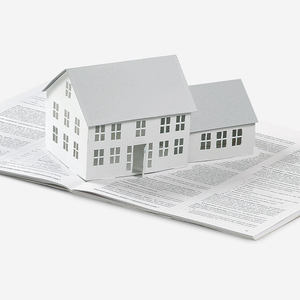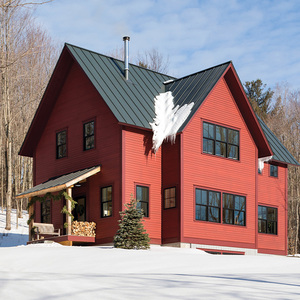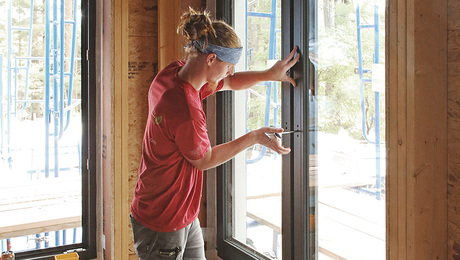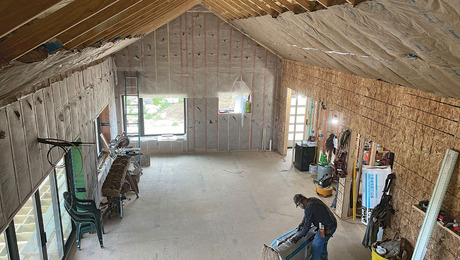Maine Gets Another Passive-House Multifamily
Development team looks for ways to keep costs down while accelerating construction schedule
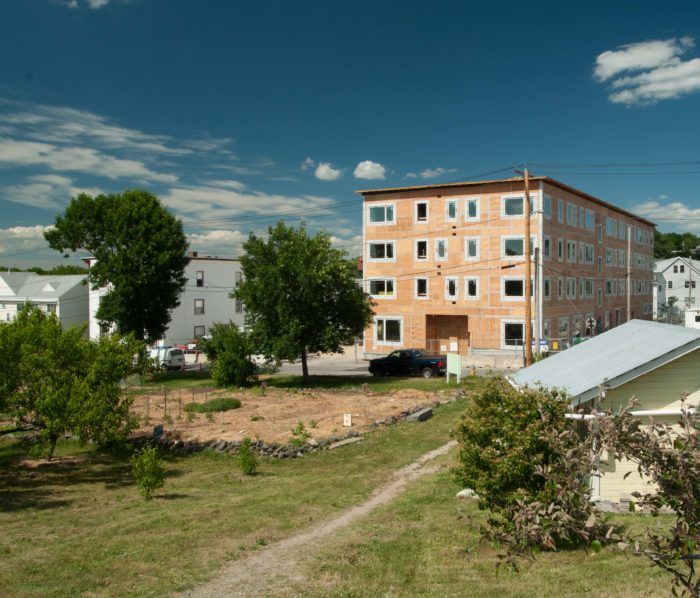
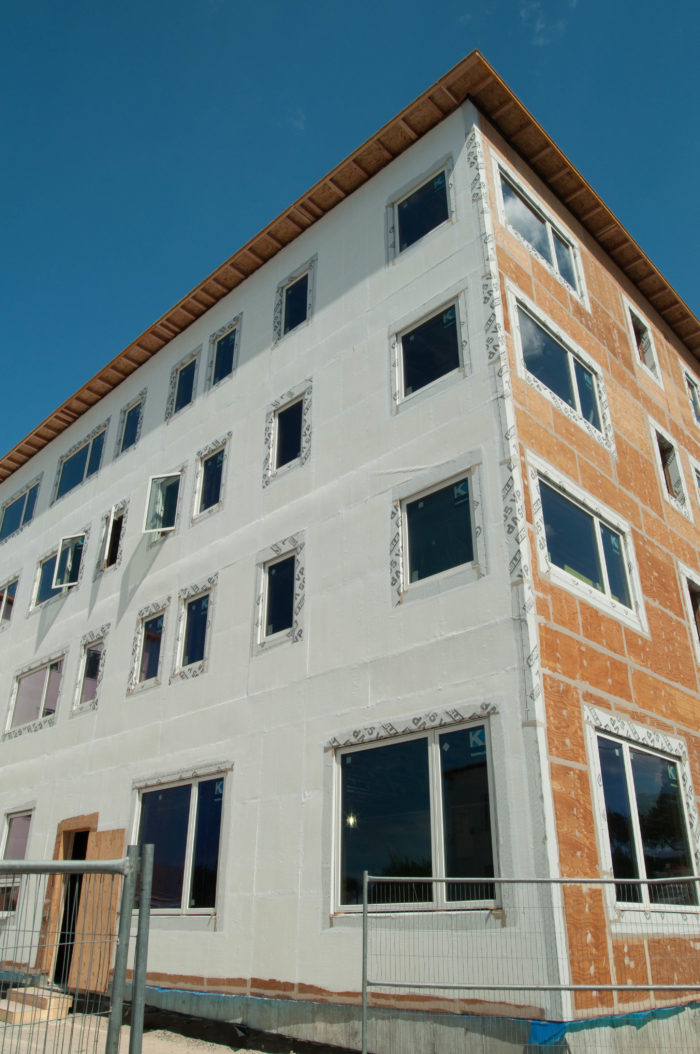
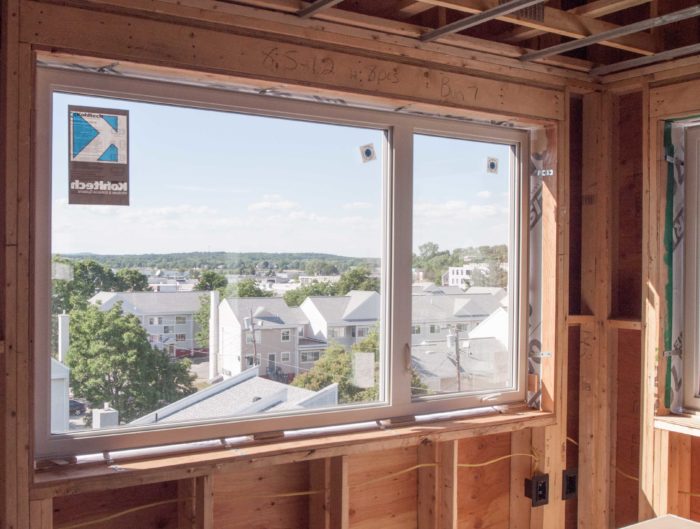
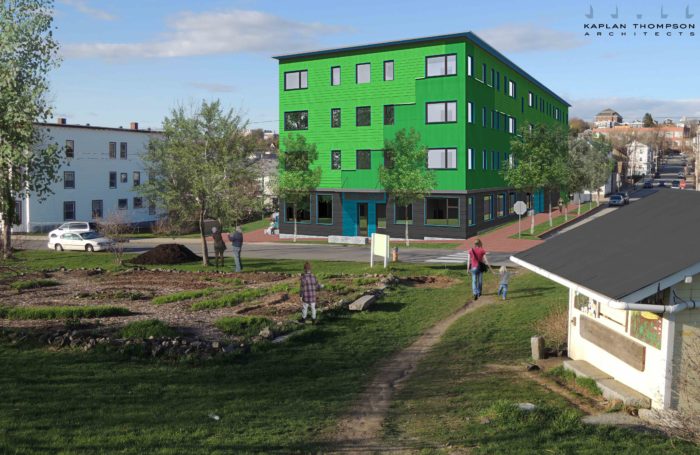

The 45-unit building, about one-third complete, is located in the city’s Bayside neighborhood, a part of the city carved in half by a 1960s urban renewal project. It will contain mostly affordable one-bedroom apartments, plus a few two-bedroom and studio units. The ground floor also will house an office of the Portland Housing Authority, a Head Start program, and a police substation, making it a community hub and giving it its name, Bayside Anchor.
Behind the project are the Portland Housing Authority and Avesta Housing, a private non-profit developer of affordable housing. The $7.6 million project is being financed mainly with low-income housing tax credits through MaineHousing, a state housing agency. The project was designed by Kaplan Thompson Architects of Portland. Wright-Ryan, which earlier this year finished a Passive House multifamily in Brewer, Maine, is the general contractor.
Although construction started in January, Bayside Anchor has been in the works since 2013. That year it won a national competition, sponsored by Deutsche Bank, for innovative designs for affordable housing.
Finding ways to cut costs has never been far from the minds of its developers, and efforts have paid off. The building will come in at $142 a square foot, project architect Jesse Thompson told a group touring the building recently, “substantially less” than the norm for new Portland housing. At the same time, residents will be getting the benefits of Passive House construction — low energy bills, high indoor air quality, and a superinsulated building envelope that will keep them comfortable.
“You’ve got affordability baked into the building forever,” Thompson said.
Passive House, but no room for frills
Passive House construction necessarily includes more insulation than conventional buildings, high-quality windows, and careful air-sealing, all of which can easily drive up costs. To stay within strict budget guidelines, Bayside developers looked for ways to trim unnecessary building elements—and that started with parking. Arguing that area residents owned fewer vehicles than average, developers successfully petitioned the city to overlook parking-space requirements that normally would have applied (the building sits on what was a parking lot).
The site is over a layer of marine clay, which is inherently weak. Designers worked to keep the building as light as possible, allowing it to rest on a floating concrete slab without the need to sink pilings for extra support.
Interior finishes are simple—painted drywall, vinyl flooring, basic kitchen cabinets. Designers shrank interior hallways to bare minimums, and revisited building details repeatedly to look for potential savings.
“The building got simpler and simpler as we went along,” Thompson said.
While he and others working on Bayside might have preferred a few more upscale finishes inside, it just wasn’t going to happen with a minimal budget that had been set three years earlier. If kitchens got bargain cabinets with drawers that were stapled together, so be it. “Every dollar in there shows up very quickly,” Thompson said. “There’s no tolerance for glamorous here.”
Designers did, however, manage to find enough money to keep vinyl off the building’s exterior. Instead, it will get a mix of fiber cement cladding over a ventilated rain screen.
On the construction side, Wright-Ryan recognized the longer builders were on site, the higher construction costs would be. Its construction managers, drawing on their experience at the Brewer Passive House project (see “Related Articles”), looked for ways to speed up the process. They divided the building into sections, each with its own set of deadlines, to improve efficiency. Exterior walls are panelized rather than built on site. Even small steps helped: So workers would not have to sort through stacks of drywall to find the right thickness for a particular application, Wright-Ryan simply specified 5/8-inch wallboard throughout the building.
If developers hit the Nov. 21 completion date for the 38,500-sq.-ft. building, it will mean a construction schedule of about 10 months. Many single-family homes, Thompson pointed out, take longer than that.
Double-stud walls, and nix the OSB
Exterior walls consist of a structural 2×6 wall and an inner 2×4 wall with a 1-inch gap between the two. Wall cavities will be insulated with dense-pack cellulose, with a layer of CertainTeed’s MemBrain on the interior to control vapor and air movement.
Thompson said plans call for plywood sheathing on the exterior of the building rather than oriented strand board because plywood is more durable and more weather tolerant during construction. Seams between sheets of plywood are sealed, and the entire outer surface is treated with a liquid-applied air barrier, a mostly silicone product made by Dow Corning.
The Largest Passivhaus Building in the U.S.
Multifamily Passivhaus Project Starts in Oregon
Passivhaus Apartment Complex Would be a Giant
Passivhaus Townhouses Are Underway in Philadelphia
A Passivhaus Multifamily in Maine Nears Completion
When it came to windows, designers considered a range of products before settling on triple-glazed units with PVC frames made by Kohltech, a Canadian manufacturer. Passive House buildings often get European tilt-and-turn windows, but in this case designers chose a mix of casements and fixed-glass units, in part to meet requirements of the Department of Housing and Urban Development.
As Thompson explained, Bayside Anchor will be required to provide air conditioning to any tenant who can present proof of a medical need. By using outward-opening casements, a tenant could use an air conditioner that sits on the floor and vents through a plexiglass insert in the window opening, thus meeting the HUD requirement, without installing AC for the whole building or investing in ductless minisplit heat pumps.
Windows specs are the same throughout the building, with a solar heat gain coefficient of 0.40. The Kohltech units averaged about $30 per sq. ft.
Other building details:
Insulation In addition to the dense-pack cellulose in the walls (about R-32), there are 8 in. of polyiso rigid insulation on top of the roof deck (R-50), and 3 inches of sub-slab expanded polystyrene. There is no spray-foam in the building other than what was used to seal the rim joists between floors.
Ventilation Each floor has two RenewAire energy-recovery ventilators to supply each apartment with fresh air. The units, which operate continuously, are 75% efficient. Kitchens have recirculating hoods that are not vented to the outside.
Heat Each apartment is heated with strips of electric baseboard that cost a total of $30,000. The bill to heat the entire building is projected at about $5000 a year, Thompson said.
Air-tightness Although the standard for the German Passivhaus standard is 0.6 air changes per hour at a pressure difference of 50 Pascals (ACH50), the PHIUS + 2015 standard uses a different metric—.05 cu. ft. per minute per sq. ft. of gross envelope area at 50 Pascals. When this is translated to ACH50, it becomes 0.37.
PHIUS standard ideal for multifamily projects
Insulation R-values may seem low for a Passive House project, but Thompson said that’s because a large multifamily building has proportionally less outside wall area for a given volume than does a single-family house.
“People are used to seeing PHIUS + and Passivhaus single-family houses with very large R-values,” he said. “Passivhaus was invented as a multifamily program in Europe. It was not a single-family construction program. The numbers work so well in multifamily. In Germany, the first Passivhaus was a townhouse, and the middle unit in a town house has two walls that face neighbors—they don’t touch the outside air.
“You think of a middle floor apartment at Bayside Anchor and it’s got one outside wall. It’s 24 ft. long and 8 ft. tall,” Thompson continued. “So, thermally, it’s just incredibly easy because your ratio of house to walls is tiny.”
Heat loss from the building is one-third through the enclosure, one-third from the ventilation equipment, and one-third though the windows, Thompson said. In a single-family house, the numbers are very different, with ventilation losses only 10% to 15% of the total.
As a result , the 75% efficiency for Bayside’s ERVs is very important for overall building performance, especially with something like 2000 to 2500 cu. ft. of air per minute moving through the building around the clock. With an ERV that efficient, when it’s 0° outside, and 70° inside, incoming air is in the mid-50s. It doesn’t take much energy to boost that to the set point. On a 30°day, incoming air is in the low 60s. “Very little heat is needed to bring it up to a good temperature,” he said.
Need for housing is very strong
Jay Waterman, development director for the Portland Housing Authority, said Bayside Anchor will be both a catalyst for more development and a hub for the community. The area was completely changed by construction of Franklin Arterial, a main thoroughfare linking Interstate-295 on the west side of town and upscale Old Port, with its shops and restaurants, on the east.
“It was small streets, a grid-patterned working class neighborhood for many, many years and then through urban renewal, Franklin cut a swath so the tourists could get over to the Old Port and people were displaced,” Waterman said. “It became more of a service center and industrial and lower income neighborhood and I would say it’s still on its way up.”
The demand for housing is strong in the Portland area. Bayside Anchor, while significant for the neighborhood, won’t put much of a dent in it.
“Let’s put it this way,” Waterman said. “There is effectively a 0% vacancy rate in Portland right now and the city would like to have 2000 more housing units built in the next four years. We’re doing 45, so it’s a real drop in the bucket compared to the demand.”
Read more: http://www.greenbuildingadvisor.com/blogs/dept/green-building-news%2A#ixzz4CPLPft4U
Follow us: @gbadvisor on Twitter | GreenBuildingAdvisor on Facebook
Fine Homebuilding Recommended Products
Fine Homebuilding receives a commission for items purchased through links on this site, including Amazon Associates and other affiliate advertising programs.
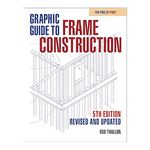
Graphic Guide to Frame Construction

Smart String Line
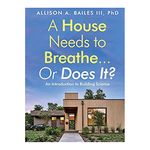
A House Needs to Breathe...Or Does It?: An Introduction to Building Science
